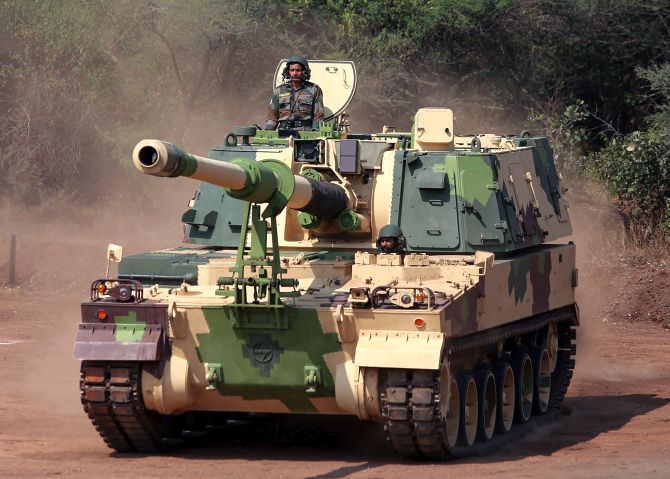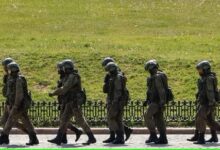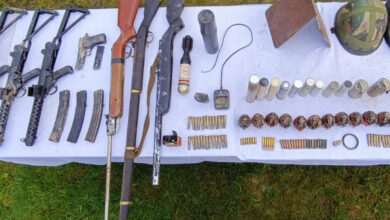Why The Indian Army’s Artillery Modernisation Plan Is Crucial?

- which accelerates it farther, is a third approach to extend projectile range without expanding the chamber's capacity or the barrel's length.
- Another type of guided munitions known as Krasnopol, which is guided into the target with a laser designator, improves precision.
Over the past five years, the army’s two mechanised strike corps, which are designed to plough deep into enemy territory during a war, have been outfitted with five K-9 Vajra artillery regiments (100 guns).
These tracked, self-propelled 155 mm/52 cal artillery guns were created by Larsen & Toubro under licence from Hanwha Techwin in Korea.
The increase in weapons is commendable, but the total amount is obviously insufficient considering that each striking corps is permitted to have four medium self-propelled regiments with a total of 20 howitzers apiece.
The army and the ministry of defence are debating whether to purchase an additional 100–200 mobile self-propelled howitzers in light of this shortage.
Ten medium artillery regiments would be equipped with the additional 200 guns:
Three regiments make up the second striking corps, while seven regiments make up the independent armoured brigades, which function as mobile, offensive units in times of conflict.
The most deadly weapon on the contemporary battlefield, artillery, has long been lacking in the army.
Since the American Civil War, artillery has served a single, straightforward purpose: to utterly destroy enemy fortifications so that the two combat arms—the infantry’s foot soldiers and the armoured corps’ tanks—can easily attack or defend them, depending on the situation.
However, the army is short in firepower for a number of reasons, the most glaring of which is that the army, the Defence Research and Development Organisation (DRDO), and the Ordnance Factory Board have failed to develop and produce easily accessible, long-range artillery cannons.
The military ministry has also been unable to fill this gap by purchasing weapons on the world market.
India has historically been weak in this area.
By strategically placing and using artillery, the invading Mughal warlord Zahir-ud-din Muhammad Babar won the First Battle of Panipat in 1526.
The Sultan of Delhi, Ibrahim Lodhi, was significantly favoured due to the army ratio in that battle, although he lacked field artillery.
The three to four gun batteries Babar had and his familiarity with their employment paralysed the army of the sultanate.
The war elephants of the Lodhi army, unaccustomed to the sound of cannons, raced erratically and tramped down numerous of their own men.
The theory of using artillery from World War II and from combat experience in the conflicts of 1965 and 1971 was passed down to India’s current military.
In both the 1962 India-China war and the 1947-1948 Kashmir battle, we lacked artillery and enough firepower across the whole frontier. Additionally, we lacked roadways that would have allowed us to position our artillery pieces for effective fire support.
Consequently, the artillery has only performed well in a small number of the Indian Army’s battles since Independence.
During the 1999 Kargil War, the 155 mm, 52 calibre Bofors FH-77 cannon served as one illustration of the artillery’s usefulness.
Our men could mount uphill assaults on Pakistani positions on commanding heights without suffering too many fatalities since focused artillery fire had significantly reduced or destroyed much of the enemy’s combat potential.
Artillery numbers
India now has roughly 226 artillery regiments and wants to grow that number to 270.
The arsenal contains 5,400 artillery pieces, with each regiment having around 18 artillery guns in addition to two reserve cannons.
Following the battle of Kargil, it was decided to “medium-ize” all of the army’s artillery regiments.
This entails switching to 155 mm medium guns from the field guns of 105 mm and 130 mm.
Additionally, there are an increasing number of multi-barreled rocket launcher units, including five Russian GRAD BM-21 regiments, three Russian SMERCH regiments, and six indigenous Pinaka units.
The purpose of rockets is to cover a wide area with firepower.
Additionally, there are three BrahMos cruise missile units and a fourth that is now being raised.
In addition to cannons, the corps of artillery uses modern SATA (surveillance and target acquisition) systems to detect and locate enemy guns and radars that can then be destroyed by counterfire.
These include the native Swati weapon finding radar, which is used in SATA batteries at the corps and divisional levels.
LOROS (long-range recce and observation system) systems, which were imported from Israel, are also used to locate enemy batteries and guns. These have a 20–25 kilometre pickup range for automobiles.
raising the efficiency of the gun
Increasing the chamber capacity of weapons is the easiest approach to increase their capabilities and range.
A gun’s chamber size determines how much charge can be ignited there and, consequently, how far a projectile can be launched.
19, 23, and 25 litre chambers are the standard sizes for artillery weapons.
The indigenous Advanced Towed Artillery Gun System (ATAGS), which the DRDO is developing, has a 25-litre chamber in contrast to the 19-litre chamber of the 155 mm/52 calibre FH-77B Bofors gun.
Since the identical projectile is discharged from all three chamber sizes of a gun, the chamber size has no bearing on how the gun will affect the target.
The only thing that alters as the chamber size grows is the amount of propellant that burns there, which increases pressure on the projectile and causes it to fly farther. This extends the ammunition’s range.
A longer barrel corresponds to a higher calibre.
The barrel of the 155 mm/39-calibre Bofors gun measures 39 x 155 mm, or 6.05 metres.
The M777 lightweight howitzer, whose 155 mm/45-calibre barrel is 45 × 155 mm long, or 6.96 metres, outranges this weapon.
A 58-calibre barrel is being developed by BAE Systems to extend the range of its M777 155 mm lightweight howitzer. Although most modern weapons have a 155 mm/52-calibre barrel that is 52 x 155 mm long, or 8.06 metres, compared to these weapons’ 8.06 metres.
Precision
Precision is another capacity the artillery is enhancing.
Less ammunition must be fired by a gun with greater accuracy in order to hit a target with the desired amount of force.
Two technologies are used to achieve precision: in the Excalibur ammunition, on-board inertial and GPS guidance allow the projectile to be guided precisely to the target.
The target’s exact coordinates must be known for that. The Excalibur is not currently employed by us.
Another type of guided munitions known as Krasnopol, which is guided into the target with a laser designator, improves precision.
The out-of-date Krasnopol supplies in India were destroyed.
Other methods
Adding a ramjet to the back of the projectile, which accelerates it farther, is a third approach to extend projectile range without expanding the chamber’s capacity or the barrel’s length. While the DRDO is doing research at academic institutions, BAE Systems is already carrying it out.
Utilizing better performance explosives in projectiles can also increase lethality.
The High Energy Materials Research Laboratory of the DRDO focuses on bi-modular charge systems in this area. This entails the employment of propellants graded according to Charge 1 through Charge 7, a scheme that is exclusive to ATAGS.







Facebook Comments